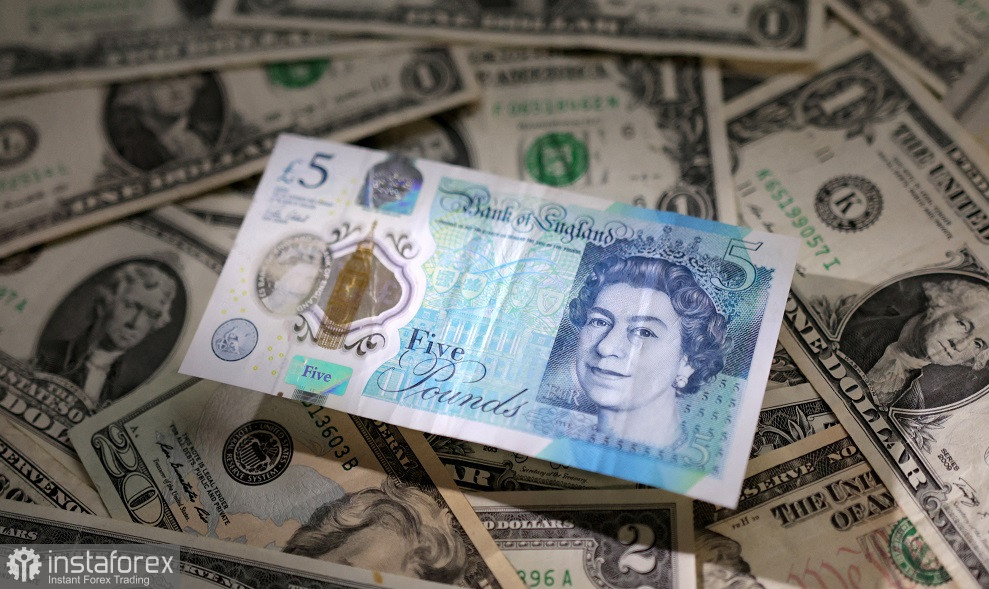
Looking at the weekly chart of GBP/USD, we can see that from early March to the end of April, the pair demonstrated a pronounced upward trend, rising from 1.1800 to a multi-month high of 1.2680. The result is impressive: the price increased by almost 900 points in just two months, not only due to the weakening of the greenback. The British currency also contributed, primarily thanks to the hawkish stance of the Bank of England. However, the pair has shown a downward dynamic over the past three weeks. And again, the English regulator played a significant role in this.
By raising the interest rate by 25 basis points at its last meeting, the Bank of England clarified that the next increase is under question. The regulator hinted that another round of monetary policy tightening would occur only in case of further inflationary indicators' growth. The central bank also emphasized its attention to the side effects of tightening monetary policy.
It is worth noting that key labor market data was published in the UK last week. The release disappointed GBP/USD buyers: almost all components of the report were in the "red zone." In particular, the unemployment rate in the country rose to 3.9% against a forecast of 3.8% growth. This is the worst result since February 2022. The number of unemployment benefits claims increased by nearly 47,000 in April, with a forecast of a 30,000 rise. This result is the worst since February 2021.
Previously published data on UK economic growth also came in the "red zone." The country's GDP increased by only 0.2% year-on-year in the first quarter, following a 0.6% growth in the fourth quarter of last year.
At the same time, the recent report on British inflation surprised with its "green hue": the overall consumer price index rose to 10.1% year-on-year, while most experts predicted a decrease to 9.8%. The core index remained at the February level (6.2%) in March, while most analysts forecasted a decrease to 6.0%.
Considering this disposition, the Bank of England hypothetically "can afford" to tighten its rhetoric. However, judging by today's speech by the head of the English regulator, the central bank's leadership is ready for a pause.
Today, Andrew Bailey answered questions from members of the Treasury Committee of the UK Parliament regarding the Bank of England's May report on monetary policy. The main message of his speech can be summarized in one phrase: further tightening of monetary policy will be required if there are signs of more sustainable price pressures. Moreover, according to Bailey, inflation has already passed a turning point ("inflation has turned a corner" literally).
In other words, the interest rate's fate depends on the inflationary growth dynamics. That is why tomorrow's day can play a key role for the GBP/USD pair. The reason is that on May 24th, key data on inflation growth in the UK for April will be published. This release is important in itself, but in this case, its significance is difficult to overestimate in the context of further prospects for tightening monetary policy.
According to preliminary forecasts, the Consumer Price Index (CPI) is expected to decrease sharply in April to 8.2% y/y (from the March value of 10.1%). The core CPI, excluding energy and food prices, should demonstrate a minimal but still downward trend, decreasing to 6.1% (from the current value of 6.2%). The Retail Price Index (RPI) is expected to decrease to 11.1% (from the March value of 13.5%). In addition, experts predict a sharp decline in the Producer Price Index (PPI) - from 7.6% to 3.8%.
If the indicators mentioned above at least meet the forecasts (not to mention being in the "red zone"), the pound will come under significant pressure. In such a case, the GBP/USD bears may not only retest the support level at 1.2360 (where the lower line of the Bollinger Bands indicator on the daily chart coincides with the upper boundary of the Kumo cloud) but also decline towards the base of the 23rd figure.
A "red hue" release will significantly reduce the probability of an interest rate hike at the June meeting, and this fact will exert background pressure on the GBP/USD pair.





















